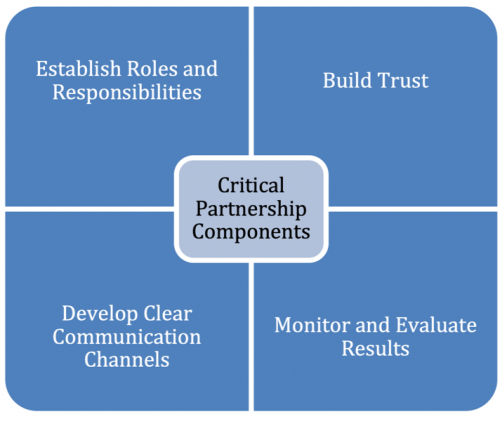Strategic partnerships leverage economies of scale to achieve more than is possible for an individual agency working in isolation with its current level of capabilities. Partnerships ensure broader stakeholder interests are considered and reduce the risk of misalignment and working at cross purposes. By actively managing partnerships among public agencies and with the private sector and academia, transportation agencies can potentially achieve greater outcomes with the same resources, while building relationships that potentially provide even greater future outcomes.
Partnerships include activities for preparing and promoting public-private partnerships (P3s); contracting in new and innovative ways; and collaborating on data-sharing agreements and other initiatives of joint interest.
Developing mutually beneficial relationships outside of the agency is not always easy, and fostering ongoing partnerships requires thoughtful care and mutual respect. According to a recent poll by McKinsey & Company, the biggest risks for strategic partnerships include:
- Misalignment on objectives
- Poor communication and lack of trust
- Poor governance practices
- Inability to adjust to change
